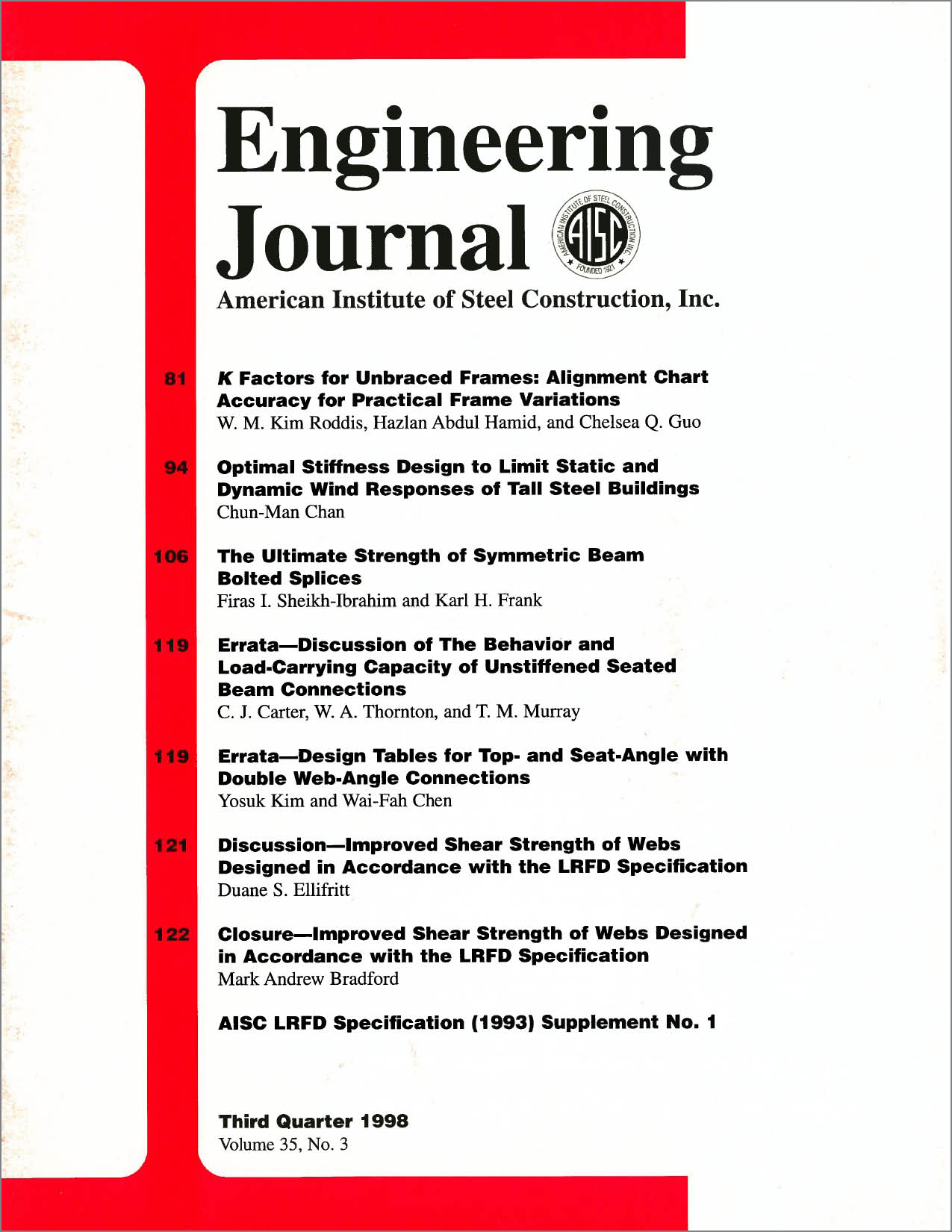The Ultimate Strength of Symmetric Beam Bolted Splices
DOI:
https://doi.org/10.62913/engj.v35i3.702Abstract
Rolled beams or plate girders are often spliced for a variety of reasons, such as: the required full length may not be available from the mill, the designer may desire a change in the cross section of the beam, or the fabricator might find it economical to splice the beam at certain locations to reduce shipping lengths or lifting loads. Figure 1 shows a typical bolted beam splice. A beam splice must transfer the shear and moment of the beam at the location of the splice. However, the exact distribution of shear and moment between the web and flange splices is not known. Figure 2 shows a free body diagram taken by cutting the splice through its centerline. Figure 2 shows that the flange splices carry tension or compression and possibly a portion of total shear. It also shows that the web splice carries predominantly the shear and possibly a portion of total moment at the splice.

